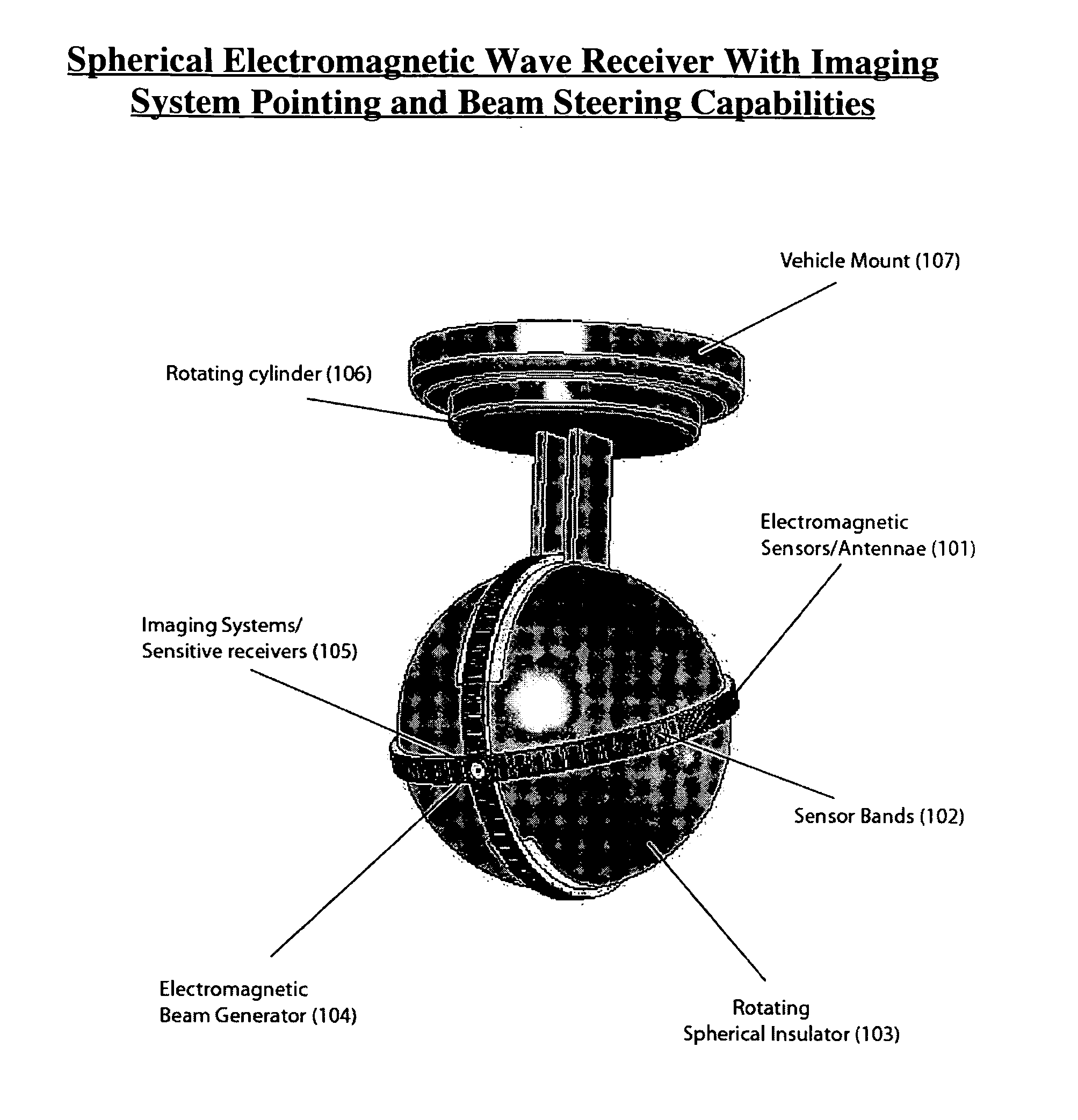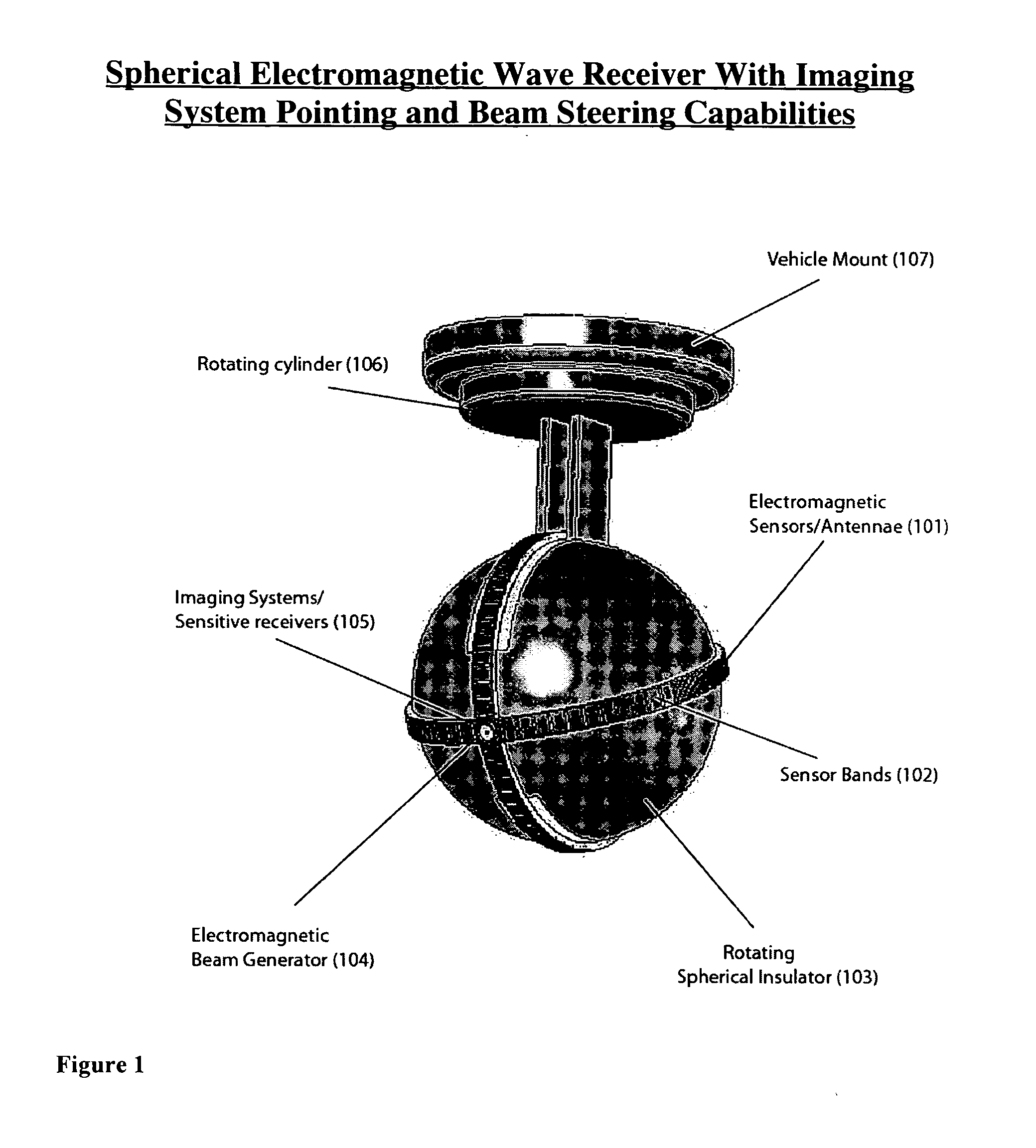Apparatus and methods for detecting and locating signals
a technology for locating signals and apparatus, applied in direction/deviation determining electromagnetic systems, navigation instruments, instruments, etc., can solve problems such as inability to accurately determine the boundary line and plane, user-operated search patterns susceptible to human error and long search times, and methods susceptible to multi-path errors.
- Summary
- Abstract
- Description
- Claims
- Application Information
AI Technical Summary
Benefits of technology
Problems solved by technology
Method used
Image
Examples
embodiment — 3d
Embodiment—3D Transmit Receive Scanning Systems
[0068] LIDAR systems using light wave frequencies can also be incorporated into the spherical receiving device. The system can emit various frequencies depending on the specific application. The receivers on the sphere will then collect waves returning from the reflecting object. Physical reflecting phenomenon such as Rayleigh and Raman scattering will be incorporated into the systems to determine the desired reflected wavelengths. In applications that search for specific gaseous particles, sensors will be used to receive the specific reflected frequency. The device will have the capability to scan various objects (including toxic, biological, and atmospheric) to find the size and density distribution. The size of the clouds will be derived by scanning and searching for boundary points where specific wavelengths (associated with reflecting particles) do not reflect back to the receiver. The density distribution of the cloud will be dete...
PUM
 Login to View More
Login to View More Abstract
Description
Claims
Application Information
 Login to View More
Login to View More - R&D
- Intellectual Property
- Life Sciences
- Materials
- Tech Scout
- Unparalleled Data Quality
- Higher Quality Content
- 60% Fewer Hallucinations
Browse by: Latest US Patents, China's latest patents, Technical Efficacy Thesaurus, Application Domain, Technology Topic, Popular Technical Reports.
© 2025 PatSnap. All rights reserved.Legal|Privacy policy|Modern Slavery Act Transparency Statement|Sitemap|About US| Contact US: help@patsnap.com



